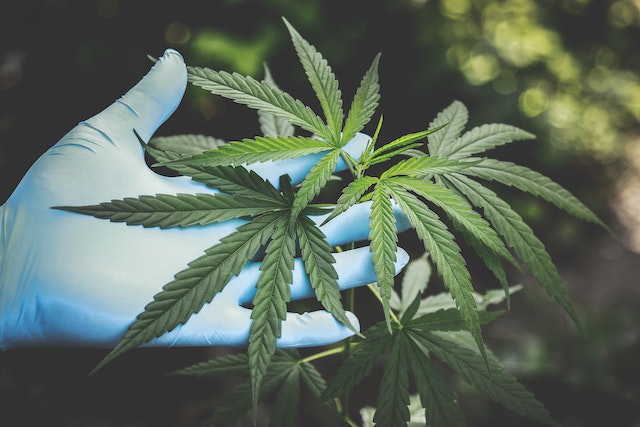Marijuana has been shown to relieve pain and muscle spasms in multiple sclerosis patients, stimulate appetite, help with weight loss associated with HIV or AIDS, and reduce nausea from chemotherapy. It has also shown promise in reducing anxiety and depression and treating PTSD and epilepsy.
Medical cannabis, with its unique blend of cannabinoids, is gaining attention in the medical community as a potential solution for these health issues. It’s now available in a wide number of locations from a range of stores, like coastal cannabis in San Diego, making it more accessible to those who need it. Still, the medical world has a long way to go in understanding the science behind marijuana.
THC
The 113 different chemical compounds that make up marijuana are called cannabinoids. Researchers discovered in the early 1990s that the chemicals in cannabis resemble the molecular structure of neurotransmitters produced by your body and naturally bind to brain receptors known as cannabinoid receptors. Because THC is similar to the chemical anandamide (which your brain makes), it can bind to and activate these receptors, sending signals throughout the nervous system that affect mood, memory, coordination, and more.
When you inhale marijuana smoke, THC zips to the brain through your lungs, where it quickly begins to go to work. It changes the activity of specific neurons in particular parts of your brain, remarkably increasing blood flow to the hippocampus and prefrontal cortex, areas involved in memory and decision-making, and decreasing activity in networks associated with anxiety and reward. This causes the high that many people feel when using marijuana. It also causes an increase in dopamine, a brain chemical associated with pleasure and motivation.
CBD
A second primary cannabinoid is CBD (cannabidiol). Unlike THC, it doesn’t produce a ‘high’ or mind-altering effect. Instead, CBD has various medicinal properties, including relieving pain and nausea.
Cannabis is also thought to help reduce the frequency and intensity of migraines and fibromyalgia. It might also improve the quality of life for older adults with Parkinson’s, Alzheimer’s and dementia, Crohn’s and irritable bowel syndrome, and glaucoma.
However, more research is needed for all these uses. And if you’re taking any medication, it’s best to talk to your doctor before considering some medical marijuanas Canada. This is because cannabis-based products are often unregulated and may contain contaminants like pesticides. Moreover, CBD can interact with other medicines and affect how your liver metabolizes them. Consequently, patients will require higher doses of other medications if they take cannabis.
Other Cannabinoids
Cannabis has been proven to be an effective pain reliever and is used to stimulate appetite in patients undergoing chemotherapy. It is also used to ease neuropathic pain in patients with multiple sclerosis and to treat nausea and vomiting associated with cancer or its treatments (including chemotherapy).
If you’re considering to use medical cannabis for glaucoma, it’s crucial to understand its potential. Its sedative effects are well-documented and can help reduce the symptoms of anxiety and depression. It is also believed to have anti-inflammatory and antibiotic properties. It can alleviate the muscle spasms of fibromyalgia and endometriosis and decrease the severity of the tremors associated with Parkinson’s disease.
The cannabinoid THC itself is derived from the plant as THCA or tetrahydrocannabinolic acid and must be decarboxylated with heat energy to produce the psychoactive form of THC. However, THCA and CBDA have their unique therapeutic effects. They are also known to have antioxidant, anti-inflammatory, and antibiotic properties and may act as a mild sedative. In addition, THCA has been shown to have anti-proliferative, or tumor-suppressing, activities and is thought to inhibit the spread of cancerous cells.
If you’re exploring the potential benefits of medical marijuana, it’s essential to find a reliable source. Consider visiting a reputable dispensary, such as this dispensary Big Bear (or a similar dispensary in your local area), where knowledgeable staff can guide you through the selection process. Whether you prefer capsules, lozenges, tinctures, or other forms, a well-established dispensary can offer a variety of options tailored to your needs.
Other Compounds
Many people use medical marijuana to treat conditions like pain, nausea, and loss of appetite. It may also ease symptoms of various health problems, including anxiety, depression, and some cancers.
Medical marijuana can be ingested in capsules, lozenges or tinctures, dermal patches, oral sprays, cannabis edibles, and by smoking dried buds. It’s also available as a synthetic drug called dronabinol and nabilone.
Research shows that marijuana can reduce the frequency and intensity of migraine headaches. It can relieve chronic pain associated with fibromyalgia, Alzheimer’s and Parkinson’s disease, and Crohn’s disease. It can also improve glaucoma symptoms in some older adults.
Marijuana is not without risks. It can affect thinking and memory, increase the risk of accidents such as car crashes, and harm a person’s lungs if smoked. It can also cause withdrawal symptoms when used often or if stopped suddenly. It may interact with some medications. Talk to your doctor before trying it.




